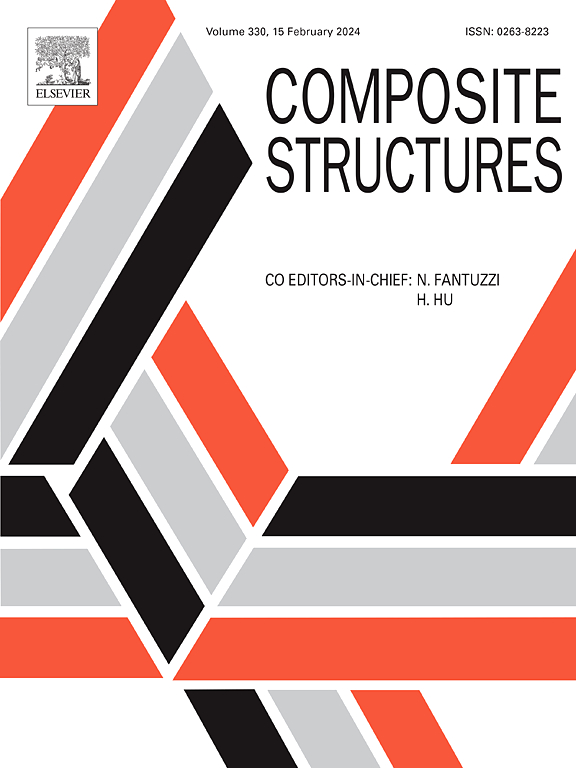Fatigue life prediction of self-sensing hybrid FRP composites via electrical resistance monitoring and LSTM neural network
IF 6.3
2区 材料科学
Q1 MATERIALS SCIENCE, COMPOSITES
引用次数: 0
Abstract
Fiber-reinforced polymer (FRP) composites are widely used in aerospace, automotive, and civil infrastructure applications due to their high strength-to-weight ratio and durability. Nevertheless, predicting fatigue life remains challenging due to the material’s complex failure mechanisms. This paper presents a novel approach to real-time fatigue life prediction in self-sensing hybrid FRP composites through electrical resistance monitoring. Carbon fiber sensor tows were embedded in a hybrid composite material to enable real-time damage detection. A long short-term memory (LSTM) neural network was implemented to predict the remaining fatigue life using only the resistance data, and importantly, without the need for stress or strain inputs. Fatigue tests were conducted, with experimental results indicating a strong correlation between resistance and cycles to failure. Empirical data was utilized to train the LSTM neural network, with the model accurately predicting the remaining fatigue life across various stress levels. Moreover, the carbon fiber sensor tows provided damage early warning, indicated by a sharp increase in resistance before failure. This study highlights the potential for a simple, low-cost structural health monitoring system with the ability to significantly extend service life through accurate fatigue life prediction.
基于电阻监测和LSTM神经网络的自感知混杂FRP复合材料疲劳寿命预测
纤维增强聚合物(FRP)复合材料因其高强度重量比和耐久性而广泛应用于航空航天,汽车和民用基础设施应用。然而,由于材料的复杂失效机制,预测疲劳寿命仍然具有挑战性。提出了一种基于电阻监测的自传感复合材料疲劳寿命实时预测方法。碳纤维传感器束嵌入混合复合材料中,实现实时损伤检测。采用长短期记忆(LSTM)神经网络仅使用阻力数据预测剩余疲劳寿命,重要的是,不需要应力或应变输入。进行了疲劳试验,实验结果表明阻力与失效循环之间存在很强的相关性。利用经验数据对LSTM神经网络进行训练,该模型能准确预测不同应力水平下的剩余疲劳寿命。此外,碳纤维传感器束提供了损坏早期预警,在故障前通过电阻急剧增加来指示。这项研究强调了一种简单、低成本的结构健康监测系统的潜力,该系统能够通过准确的疲劳寿命预测显着延长使用寿命。
本文章由计算机程序翻译,如有差异,请以英文原文为准。
求助全文
约1分钟内获得全文
求助全文
来源期刊

Composite Structures
工程技术-材料科学:复合
CiteScore
12.00
自引率
12.70%
发文量
1246
审稿时长
78 days
期刊介绍:
The past few decades have seen outstanding advances in the use of composite materials in structural applications. There can be little doubt that, within engineering circles, composites have revolutionised traditional design concepts and made possible an unparalleled range of new and exciting possibilities as viable materials for construction. Composite Structures, an International Journal, disseminates knowledge between users, manufacturers, designers and researchers involved in structures or structural components manufactured using composite materials.
The journal publishes papers which contribute to knowledge in the use of composite materials in engineering structures. Papers deal with design, research and development studies, experimental investigations, theoretical analysis and fabrication techniques relevant to the application of composites in load-bearing components for assemblies, ranging from individual components such as plates and shells to complete composite structures.
 求助内容:
求助内容: 应助结果提醒方式:
应助结果提醒方式:


